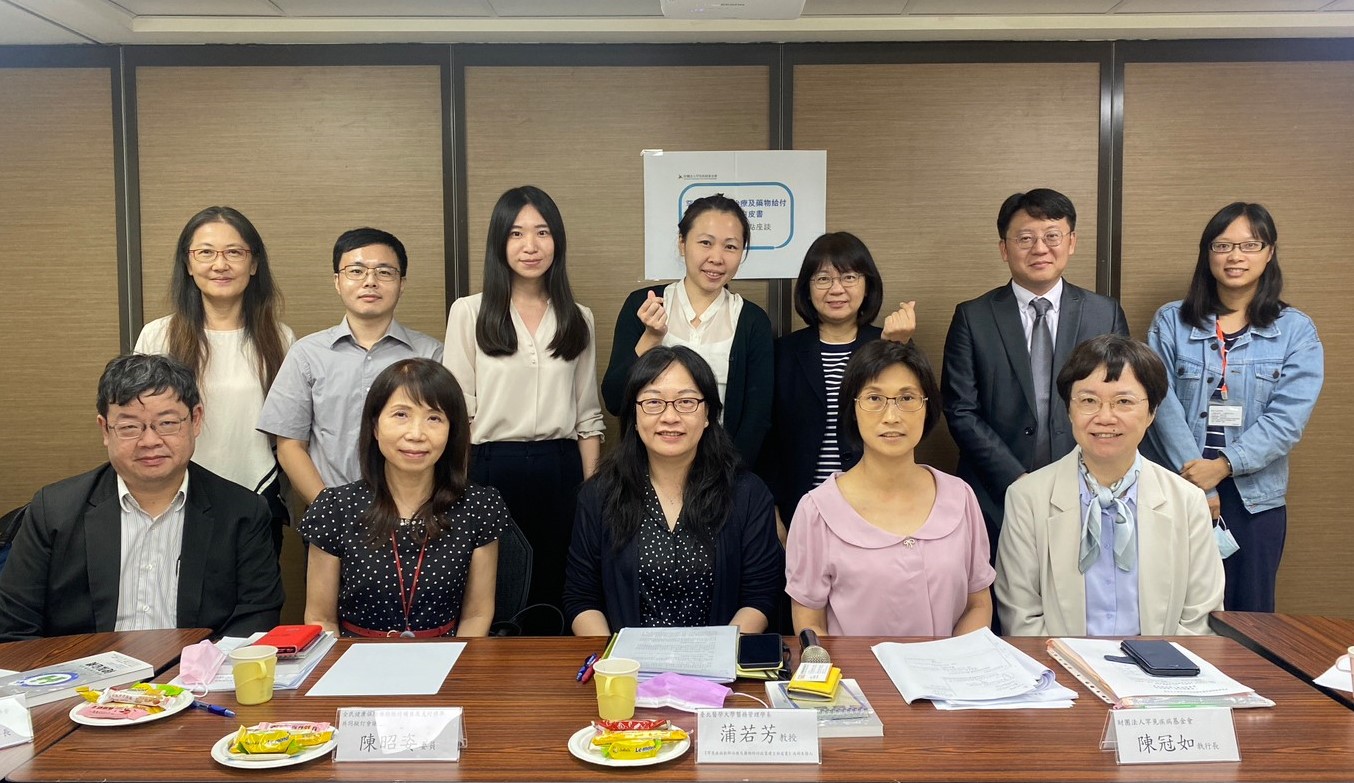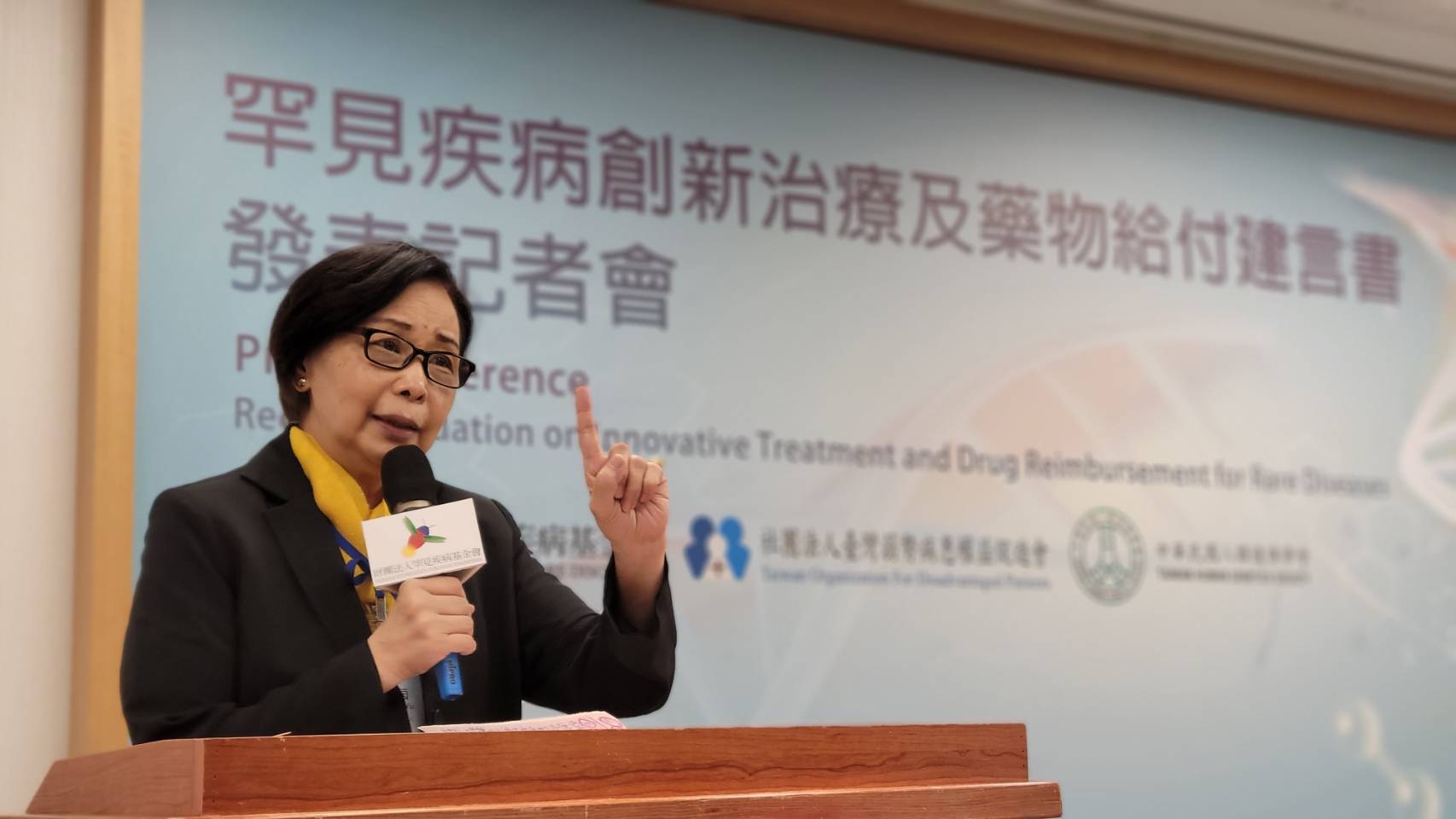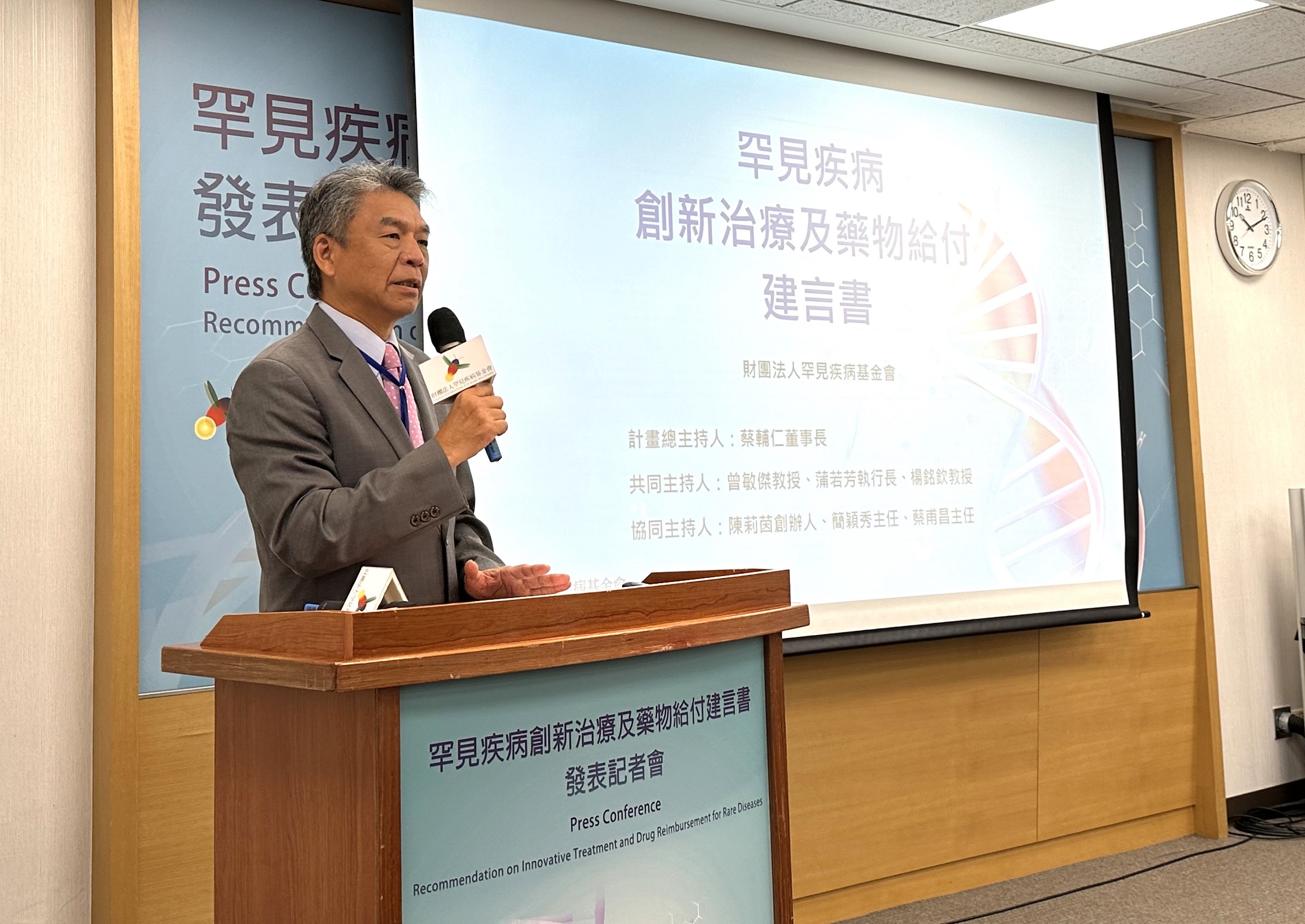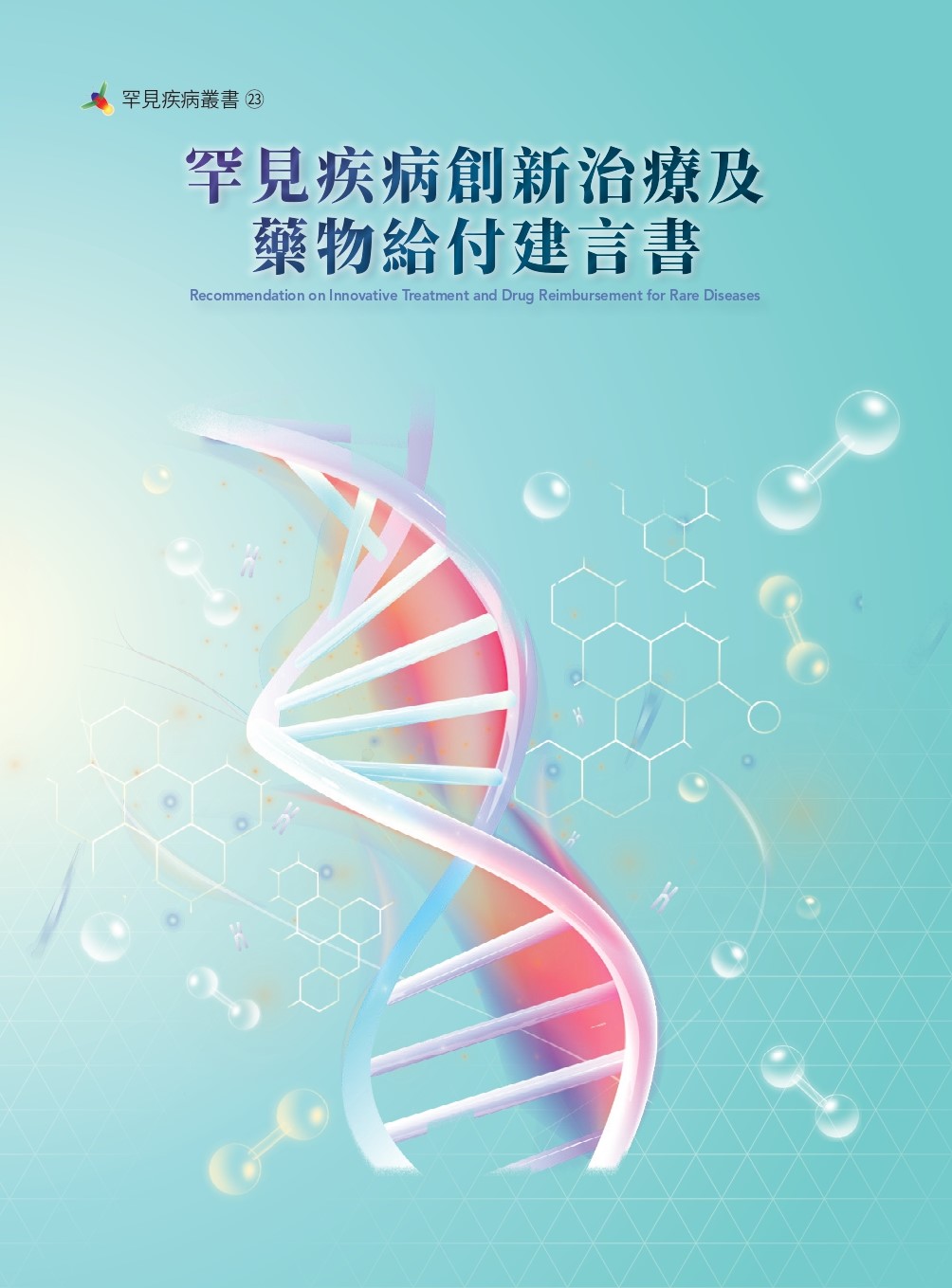News
First White Paper on Rare Diseases
Over the past 20 years, Taiwan has become a global leader in rare disease care and human rights advocacy, as well as a model for countries around the world to promote rare disease policies.
However, in recent years, the accessibility of orphan drugs has declined significantly.
TFRD understands that new drugs and innovative treatments for rare diseases are the only hope for many families with rare diseases, but the reality is that they repeatedly encounter setbacks.
Funding for orphan drugs, which accounts for less than 1%, will not cause a “national health insurance crisis”
Out of the NHI's total budget, which stands at about NT$800 billion, one may wonder how much of the allocation is dedicated to the treatment of rare diseases.
According to expenditure data from 2022, the NHI budget totaled NT$809.5 billion, of which funding for rare disease medications accounted for a mere 0.95%. While this figure may seem insignificant to the average person, it holds profound implications for families with rare diseases, potentially impacting their futures and contributing to social stability.
Rare drugs have always accounted for less than 1% of the total amount of the NHI budget, and will never, and should never be perceived as a “threat” to the overall health insurance system.
For this reason, TFRD has been continuously advocating for the issue of rare disease medication, including a series of advocacy activities on “Challenges and Future Prospects of Rare Disease Healthcare” advocacy activities, commissioning ETtoday to conduct an online poll in early 2023, and convening the “Press Conference Calling for the Implementation of New Drug Budgets” on Rare Disease Day 2023. Our goal is to urge the National Health Insurance to promptly cover new drugs.
During the 2024 presidential election, the presidential candidates proposed healthcare policies for the general public, but none of them have shown any concern for healthcare policies for rare disease patients or concrete and feasible plans.
Aiming to continue the momentum of advocacy, TFRD has organized this recommendation action, hoping that the presidential candidates of all parties will give more consideration to the policy planning for rare diseases, so that the needs of the extremely vulnerable can be met.
The first white paper, born from the collective wisdom of experts
Starting in May of this year, TFRD, under the leadership of Founder Ms. Serena Wu, Co-founder Professor Min-Chieh Tseng, and Chairman Fu-Jen Tsai, embarked on a series of consultations with experts in health insurance and pharmaceuticals to gather valuable insights.
After extensive efforts, we successfully established a robust recommendation team, comprising three co-hosts who spearhead distinct issue groups: the Orphan Drug Funding Group, the Orphan Drug Coverage Group, and the Patient Rights Group.
Between June and August, each group convened scholars and experts from relevant fields to gather opinions through focused discussions. Drawing on data and information sourced both domestically and internationally by our editorial team, we meticulously compiled the content for each chapter of our recommendation paper. This collaborative process culminated in the formulation of six significant recommendations aimed at enhancing support for orphan drugs and the rights of patients.
Recommendation 1:
Implementing social health insurance to increase the accessibility to orphan drugs
1. Protecting the medical rights of rare disease patients. Taking care of said patients shows the government’s attention on disadvantaged groups and the promotion of health equality.
2. Ensuring that the total amount of budget allocated under the National Health Insurance covers the needs of said patients, while safeguarding the earmarked funds for orphan drugs.
3. Comprehensive review of various obstacles in the coverage and reimbursement of orphan drugs or those in current regulations and operating methods.
Recommendation 2:
Advocating the U.N. resolution and international measures to defend the human rights of persons living with rare diseases
1. Supporting the U.N. resolution to align the rights of rare disease patients with international standards.
(1) On October 10, 2019, the 74th U.N. General Assembly announced the Political Declaration on Universal Health Coverage (UHC), urging all member states to achieve UHC for patients with rare diseases.
(2) On December 16, 2021, the 76th U.N. General Assembly put forward a resolution on “addressing the challenges of persons living with a rare disease and their families,” reaffirming that the enjoyment of the highest attainable standard of health is one of the fundamental rights of every human being and paying special attention to individuals who have no access to medical services and medicines due to different disabilities.
2. According to the 2022 Economist Impact report on seven markets in Europe and the Asia-Pacific region regarding patients with rare disease – “A key issue is access.” The report also includes recommendations on the promotion of reforms in the following four major areas, so that patients with rare diseases can receive better care with lower medical expenses.
(1) The need to raise the public’s awareness of rare diseases and to integrate care for such diseases into the mainstream.
(2) The need to reshape health technology assessment (HTA) to the realities of orphan drugs and to assess the value of rare disease treatments.
(3) The need for more and better registries to collect case studies from real-life settings.
(4) Empowerment of the patient voice.
Recommendation 3:
Safeguarding the earmarked funds for orphan drugs under the National Health Insurance with reasonable budget increase and proper implementation
1. Reasonable budget increase for orphan drugs under the National Health Insurance. Earmarked funds are recommended to be allocated under 3 causes:
(1) steady increase of budget for orphan drugs currently covered;
(2) the estimated demand for new drugs;
(3) the development of new treatments.
2. Improving implementation of earmarked funds for orphan drugs.
(1) Accelerating the approval of new drugs and their coverage and reimbursement.
(2) Reviewing policies for drug coverage and reimbursement on a rolling basis, with a withdrawal plan in place.
3. Securing multiple sources for funding orphan drugs coverage.
4. Allowing the remaining earmarked funds to be reallocated to other uses in need, on the premise of not affecting the reasonable increase of the annual budget.
Recommendation 4:
Accelerating the coverage and reimbursement of orphan drugs and optimizing HTA
1. Establishing a Rare Disease Subcommittee in replacement of the original expert task force under the NHI Advising Committee.
2. Establishing a Rare Disease Value Assessing Task Force to determine the value of treatment and drugs.
3. Evaluations on the value of orphan drugs and treatments should adopt indicators different from those for regular medicine. For instance, assessments regarding psychology, family and social impact, prevention of genetic diseases and supporting strategies, etc.
4. Should the National Health Insurance refer to the Institute of Clinical and Economic Review (ICER) standards for orphan drug pricing, it is recommended that the pricing standards for regular medicine first be established also in accordance with ICER standards.
5. The government should be the responsible entity, supervising the roles and tasks of all parties, including the Rare Disease Subcommittee, the NHI Advising Committee, the National Health Insurance Administration (NHI), and the Health Promotion Administration (HPA).
6. Under the principle of openness and transparency, the government should make public the timeline for new orphan drug approval, including stages ranging from initial application to the date the coverage takes effect.
7. Establishing standards, policies for management and funding, and responsibilities for collecting data from real-world settings and gathering evidence on the use of orphan drugs.
Recommendation 5:
Encouraging meaningful patient participation for HTA
1. Enhancing the role of patients or patient groups in the assessment of drugs to be covered by the National Health Insurance.
2. Establishing guidelines for collecting patient opinions with clear feedback and reflections.
3. Patient experience should be taken into account by the Rare Disease Subcommittee for value assessment.
4. For review meetings on drug coverage and reimbursement; for instance, those on re-proposals or revisions to the scope of coverage, considering the nature of certain rare diseases, opinions from individual patients should be taken into account, if there is no patient group for such a disease category.
Recommendation 6:
Multiple sources for funding orphan drugs and treatments
Initiating a diversified fund for innovative treatments, whose sources of funding include tobacco excise taxes, public budget, levy from pharmaceutical companies, and government incentives and subsidies. The said fund can serve as an early-stage accessibility plan for innovative treatments. When the effectiveness of a certain treatment is yet to be determined, such a treatment can be subsidized for 1 to 3 years by the fund. In addition, the assessment standards of the said treatment, regarding its safety, effectiveness, and side effects, should be consistent with those for drugs covered by the National Health Insurance.
1. Initiating a diversified fund for innovative treatments.
2. Securing multiple sources for funding innovative treatments.
(1) Public budget;
(2) Government incentives and subsidies for biotechnology development;
(3) Levy from pharmaceutical companies;
(4) Air pollution control fees;
(5) Water pollution control fees;
(6) Charity lottery surplus;
(7) Sports lottery surplus;
(8) Charity donation;
(9) Social welfare budget;
(10) Other budget and financial resources.
Translator: David Lee (Becker Muscular Dystrophy)
















